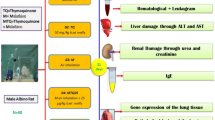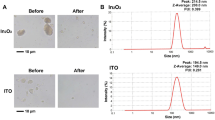Abstract
A REPORT1 from the National Naval Research Laboratory has indicated that 3-methylfuran (3MF) was a major atmospheric contaminant during a smog alert in Washington DC in August 1973. Although the source of the 3MF was unknown, the authors suggested that it could be formed from atmospheric photooxidation and degradation of volatile hydrocarbons such as isoprene and other terpenes. These naturally occurring precursors are released in large amounts2 into the atmosphere by vegetation, and may be concentrated during certain weather conditions; deciduous forests, such as those covering the Appalachian Mountains, are thought to be a major source2–4. The suggestion that 3MF, which apparently is not present in automobile exhaust emissions, could be a major contributor to certain urban smogs aroused considerable controversy, for automobiles have been widely considered to be the major source of atmospheric pollutants, especially in nonindustrial areas such as Washington DC. We have found no toxicological data concerning 3MF, although many other furans are highly toxic to the liver, kidneys6,7 and lungs7–9 of experimental animals, after metabolism (catalysed by cytochrome P-450-dependent mixed-function oxidases) to highly reactive alkylating agents within the target tissues. For example, when 4-ipomeanol8,9 is given to experimental animals by intraperitoneal, intravenous or oral routes, it is highly toxic to pulmonary nonciliated bronchiolar cells (Clara cells)9, which are an important locus of cytochrome P-450-dependent mixed-function oxidase (MFO) enzymes in the lung. The nonciliated bronchiolar cells are therefore important potential target cells for environmental toxins or carcinogens which require MFO-mediated activation9. We report here that 3MF is metabolised in vivo in mice to a potent alkylating agent which produces acute pulmonary bronchiolar necrosis. These results suggest that 3MF could play a significant part in the pathogenesis of human lung disease.
This is a preview of subscription content, access via your institution
Access options
Subscribe to this journal
Receive 51 print issues and online access
$199.00 per year
only $3.90 per issue
Buy this article
- Purchase on Springer Link
- Instant access to full article PDF
Prices may be subject to local taxes which are calculated during checkout
Similar content being viewed by others
References
Saunders, R., Griffith, J. & Saalfeld, F. Biomed. Mass Spectrom. 1, 192–194 (1974).
Went, F. W. Proc. natn. Acad. Sci. U.S.A. 46, 212–221 (1960).
Rasmussen, R. J. Air Pollut. Control Ass. 22, 537–543 (1972).
Smith, G. Rocky Mount. med. J. 64, 55–58 (1967).
Mathews, J. The Washington Post June 10, 1 (1975).
Mitchell, J., Potter, W. Z., Hinson, J. & Jollow, D. J. Nature 251, 508–511 (1974).
Boyd, M., Burka, L., Harris, T. & Wilson, B. Biochim. biophys. Acta 337, 184–195 (1974).
Boyd, M. Envir. Hlth Persps 16, 127–138 (1976).
Boyd, M. Nature 269, 713–715 (1977).
Author information
Authors and Affiliations
Rights and permissions
About this article
Cite this article
BOYD, M., STATHAM, C., FRANKLIN, R. et al. Pulmonary bronchiolar alkylation and necrosis by 3-methylfuran, a naturally occurring potential atmospheric contaminant. Nature 272, 270–271 (1978). https://doi.org/10.1038/272270a0
Received:
Accepted:
Issue Date:
DOI: https://doi.org/10.1038/272270a0
Comments
By submitting a comment you agree to abide by our Terms and Community Guidelines. If you find something abusive or that does not comply with our terms or guidelines please flag it as inappropriate.



